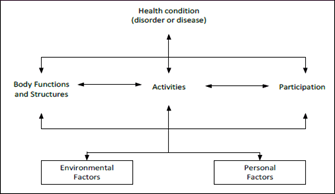The Washington Group Short Set of Questions on Functioning
Better information on the experiences of disabled people assists policy and practice planning.
Washington Group on Disability Statistics
The Washington Group on Disability Statistics is a voluntary working group comprising representatives of over 100 National Statistical Offices and international non-governmental and disability organisations, organised under the aegis of the United Nations Statistical Division.
The primary purpose of the Washington Group is to focus on the challenge of defining and measuring disability in a way that is culturally neutral and reasonably standardised among the United Nations member states. Using measures that are minimally influenced by culture and context optimises the possibility of international comparisons by capturing comparable populations across countries.
The work of the Washington Group, which first met in 2002, has become increasingly important since the United Nations Convention on the Rights of Persons with Disabilities (CRPD) came into force in 2008. Article 31 of the CRPD obliges State Parties 'to collect appropriate information, including statistical and research data, to enable them to formulate and implement policies to give effect to the present Convention.'
International Classification of Functioning, Disability and Health
In 2002, the Washington Group agreed to use the International Classification of Functioning, Disability and Health (ICF) external URL , developed by the World Health Organisation, as the framework to use in disability measurement.
The ICF provides a framework for conceptualising and classifying disability. The focus is on the individual’s ability to function within an environment (whether physical, social, or attitudinal), as opposed to focusing on the presence of disease (eg, a medical diagnosis) or self-identification as 'disabled' (eg, identifying disabled people as a cultural group with a unique identity).
The ICF diagram, shown below, lays out various types of functioning:
- body functions (eg, walking, hearing)
- daily activities undertaken by an individual (eg, climbing steps)
- an individual’s participation in any area of society (eg, paid employment).
In addition, the ICF focuses on how the relationship between these three types of functioning is influenced by:
- environmental factors (eg, inaccessible transportation and public buildings, negative attitudes, limited social supports)
- personal factors (eg, behavioural patterns).
 Figure 1: Interaction between the components of the ICF
Figure 1: Interaction between the components of the ICF
The ICF approach to disability can be aptly described as a bio-psycho-social model, given that it takes into account impairments in body function, limitations in carrying out everyday tasks, and restrictions to participating in a range of areas of society. In other words, the ICF defines disability as an umbrella term for impairments, activity limitations, and participation restrictions.
So the ICF has provided a framework to conceptualise and classify disability by focusing on body function and structure, activity, participation, and environment. The piece that is missing is a measurement instrument to identify a person as disabled. The Washington Group Short Set of Questions on Disability (WGSS) is a measurement instrument that addresses this gap.
Washington Group Short Set of Questions on Functioning
Purpose
It is important to note that the WGSS has been designed to focus on one aspect of the ICF, that is, to identify individuals who are at greater risk than the general population of experiencing restricted social participation because of difficulties undertaking basic activities. The purpose underpinning disability measurement in the WGSS is to see whether there is equality of opportunity in society for people with and without impairments in carrying out everyday activities.
The WGSS has been developed for use in censuses and sample-based national surveys that are not disability specific. The format of data collection in these types of population surveys dictates that only a small number of additional questions can be included. Hence, there are only 6 questions in the WGSS, and these are not designed to:
- estimate prevalence of disability
- determine the need for services or interventions that can improve the lives of disabled people
- identify people with mental health issues
- identify young children with impairments.
List of questions
The six questions that comprise the WGSS are listed below. These questions focus on 6 core functional domains: seeing, hearing, walking, cognition, self-care, and communication.
- Do you have difficulty seeing, even if wearing glasses?
- Do you have difficulty hearing, even if using a hearing aid?
- Do you have difficulty walking or climbing steps?
- Do you have difficulty remembering or concentrating?
- Do you have difficulty (with self-care such as) washing all over or dressing?
- Using your usual (customary) language, do you have difficulty communicating, for example understanding or being understood?
Response scales
- No – no difficulty
- Yes – some difficulty
- Yes – a lot of difficulty
- Cannot do at all
Different thresholds can be used to derive disability status from the questions. The Washington Group recommends a threshold that requires individuals to have 'a lot of difficulty' undertaking at least one of the activities in order to be identified as 'disabled'.
Inclusion of Washington Group Short Set of Questions on Functioning in regular New Zealand household surveys
The WGSS was first used in New Zealand in 2016 when the questions were first added to the General Social Survey (GSS). In 2017 they were also added to the Household Labour Force Survey, followed by Census in 2018.
Since that time, Washington Group Questions have been added to over 20 non-disability specific surveys. This means we now have a broad suite of data sources that allow us to regularly compare outcomes for disabled and non-disabled people. More information can be found at Disability Data resources and guidance.
